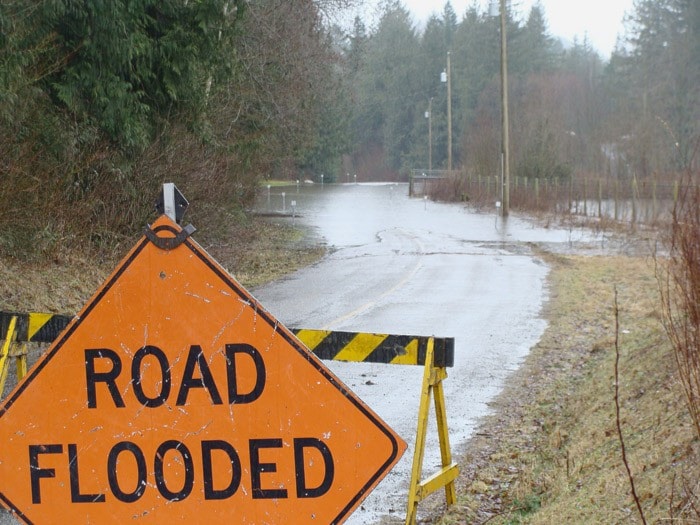The pooling water is a perennial problem for part of the Columbia Valley, but that doesn't make it any easier to swallow.
Maple Falls Road resident Wendy Winterton said she is fed up with the flooding that occurs almost every year on her street.
She's kept a log over the years and has noticed the water tends to start pooling after the heavy rains arrive after a snowfall, and it fills the local creeks to bursting.
"Right now it's coming out of the creek pretty good. We've been trying to get this addressed," she said. "I've contacted every agency I can think of but everyone just passes the buck."
She's wrote to B.C. Transportation Minister Shirley Bond recently about the situation, but to no avail.
The water rushes down a local creek bed and collects in a pool and then spreads across and down the road.
It's been going on for more than 20 years, said Winterton, and they've even lost friendships over it.
Sometimes the backed-up water is more than a metre high, which keeps people home from work, out of their vehicles, and keeps school bus drivers away from the area.
Because the Winterton home is above the floodplain, it stays dry. But getting around is another story.
"When it happens I can't get out of my driveway. I can't drive my car through it. I couldn't get to work earlier this week," Winterton said.
Although the Ministry of Transportation has the responsibility for maintaining the roadway, it is located within Fraser Valley Regional District territory.
Part of the problem may be linked to some land-clearing undertaken a few years ago on private property, which exposed the soil, and allowed silt to flow into the area with the runoff.
Complicating the issue is the fact that the ‘kettle,’ which is a natural draining mechanism for the runoff water is also on private property, and not on Crown land.
There is no simple answer, said Lynn Orstad, FVRD emergency program director. The houses are safe, but access becomes an issue.
But even if the FVRD obtained permission to have the kettle dug out, which was estimated to cost $80,000, the drainage mechanism could become blocked permanently, if the exact source of the problem is not found, or if it was impacted by limestone silt.
"Then we would have a lake," said Orstad.
For now, all they can do is continue to monitor the situation every year, she said, and erect signage for safety reasons when need be.
"We do appreciate the challenge that it presents to residents but we are hampered because of funding issues, and private property concerns."
It's a tricky situation in terms of accessing funding available from the Provincial Emergency Program.
"The only way to qualify is to declare a state of local emergency. But because of the amount of water we can't dig when the levels are high because of the danger of not knowing what's beneath. The only time would be when it's dry to dig it out, but then it's not an emergency, and therefore not eligible for PEP funding. That is the catch 22."
